The 10 Highest-Grossing Movies of 2019
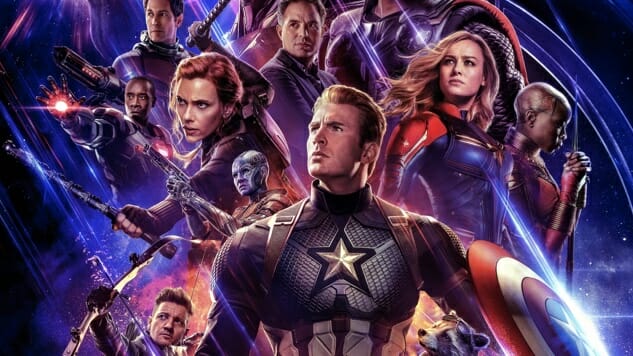
It’s no surprise that nine out of the 10 highest-grossing movies of 2019 so far are based on existing properties, whether sequels, extensions of a franchise or adaptations of a game or comic book. So that makes it all the more impressive what Jordan Peele and Universal Pictures has accomplished with Us. With a budget of just $20 million, the horror film grossed more than a quarter billion dollars worldwide, earning a place among Disney live-action remakes and superhero films.
But then there’s Marvel. It looks like there will now be a Marvel movie playing in theaters from now until the real world needs a superhero to save us from the end of days. Disney is just printing money with each new installment, none more so than Avengers: End Game, which has broken just about every box office record: highest opening weekend gross worldwide ($1.2 billion), widest domestic release (4,662 theaters), highest market share in a weekend (89.7%). In July it surpassed Avatar’s worldwide gross of $2.787 billion to become the highest-grossing movie worldwide of all time and is second only to Star Wars: The Force Awakens in the U.S.
Below we’ve listed the 10 highest-grossing movies at the U.S. box office as of the end of Sept. 12. That leaves off films like The Wandering Earth and Alita: Battle Angel, which performed better worldwide. We’ll update this list throughout the year.
Here are the highest-grossing movies of 2019 so far:
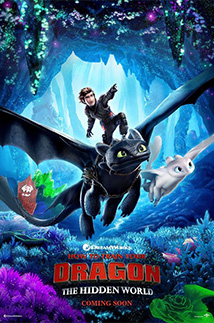 10. How to Train Your Dragon: The Hidden World
10. How to Train Your Dragon: The Hidden World
Domestic Gross: $161 million
International Gross: $520 million
Release Date: February 22, 2019
Director: Dean DeBlois
While every studio is tripping over themselves to kick-start the next blockbuster franchise before the first film is even cast, the How to Train Your Dragon crew has been building an engaging family fantasy/adventure trilogy (loosely based on the novels of Cressida Cowell) over the last ten years. The first movie was a pleasant surprise—it not only avoided Dreamworks’ then-prevalent animated family fare formula of tongue-in-cheek humor and pop-culture references, but built on its source material in a way that created a distinct fantasy world that any fan of the genre, child or adult, could enjoy. At its core, the story of Viking teen Hiccup (Jay Baruchel) befriending a rare dragon called Toothless and learning to get along with dragons in a culture that feared and hunted them was a tender allegory on young adults paving their own way in life while standing up to tradition they deem to be wrongheaded. How to Train Your Dragon: The Hidden World revolves around Hiccup trying to find a new location that would keep the people of Berk and their dragons safe. After spending years rescuing dragons from captivity, the townspeople are understandably worried that the dragon poachers will soon retaliate, so Hiccup takes it upon himself to find the mythical Hidden World where humans and dragons can live in peace. Meanwhile, Toothless falls in love with a female night fury (dubbed a “light fury” thanks to her bright white skin). The new love interest is joined by a new antagonist, Grimmel (F. Murray Abraham), the greatest dragon hunter in the world. The developing rift—or perhaps it’s more precise to call it “drift”—between Hiccup and Toothless that provides the overall narrative glue for the film’s series of breathtaking action set pieces might provide a bittersweet tone for fans of the series. Yet it also captures the bittersweet experiences we all face when we take our final steps into adulthood. That doesn’t mean the spectacle is lacking. The visual majesty of this Viking utopia, full of foggy mountains and the clear blue sea as far as the eye can see get yet another upgrade with some new breathtaking locations. It all makes for a solid conclusion to such an endearing franchise. Given it success, it seems unlikely this will be the last film from the land of Berk and beyond. But as a closing chapter in the tale of Hiccup and Toothless, The Hidden World ends this portion of the tale on a satisfying note. —Oktay Ege Kozak / Full Review
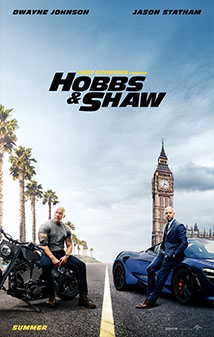 9. Fast & Furious Presents: Hobbs & Shaw
9. Fast & Furious Presents: Hobbs & Shaw
Domestic Gross: $165 million
International Gross: $722 million
Release Date: August 2, 2019
Director: David Leitch
This is the best kind of ridiculousness. Silly earnest monologues are elevated by great acting for comic effect the same way the physics-bending close calls. At one point, Idris Elba—the man who gave us Stringer Bell, DCI John Luther and Nelson freaking Mandela—actually utters the phrase “Genocide Schmenocide” and deserves an Oscar for somehow making that work. Helen Mirren, an actress of such depth she’s been awarded The Most Excellent Order of the British Empire, doesn’t look out of place acting opposite Jason Statham because Statham can hold his own against the best. Vanessa Kirby, coming off a show-stealing turn as Princess Margaret in The Crown deserves her own spinoff and whatever Marvel role might come available next. Ryan Reynolds continues his Reynoldssance with a long cameo, recreating his Deadpool schtick as Hobb’s CIA handler. Dwayne Johnson has made the long journey from wrestler once known only as The Rock to bit-part villain to one of the most charismatic leading men of this century. And all of this would simply not work otherwise. The constant banter, the soapy family drama and the dizzying jump cut action scenes would all fall apart in lesser hands. Our movies editor Dom Sinacola maintains that this is one of the weaker entries in the franchise (and obviously I’m not in a position to argue its relative ranking), but to me, this international sci-fi spy thriller is just about the highest form of popcorn entertainment. I believe Jason Rhode now when he wrote of Fate of the Furious in 2017, “It is so over-the-top that it establishes a new top. … Its exaggerations—like when The Rock lifts an insufferable bureaucrat against a wall by ninety degrees—are as much a part of its deliberate technique as the oversized gestures of kabuki or opera. … It’s so clever, so perfectly executed, emotionally sincere, self-aware and gloriously cinematic that I think it’s made me happier, and more entertained, than any other movie I’ve seen this year.” That’s a joyous thing. I can’t yet speak to the rest of the franchise (but be sure I’ll at least go back and watch all the Hobbs entries), but Hobbs & Shaw perfects what we loved about those old Bond openings in a way so many other big-explosion action flicks have tried and failed. There’s a reason the franchise has lasted nine entries, and I’m all in for number 10. —Josh Jackson / Full Review
 8. John Wick: Chapter 3 – Parabellum
8. John Wick: Chapter 3 – Parabellum
Domestic Gross: $171 million
International Gross: $322 million
Release Date: May 17, 2019
Director: Chad Stahelski
The promise of John Wick: Chapter 2 is in superposition. Depending on how one comes into John Wick: Chapter 3 – Parabellum, from which angle, that promise is simultaneously fulfilled and squandered. Chad Stahelski’s third and by no means last entry in the saga of laconic gentleman terminator John Wick (Keanu Reeves), the Baba Yaga of every gangster’s worst nightmares, either lives up to previous entries as far as setting the standard for visceral, eardrum-squelching violence, or it fails to take the series in the direction presaged by the apocalyptic cliffhanger of the previous chapter. No, every living human in New York is not a secret assassin, plunging John Wick into a race against time through a Dantean Hell of his own devising, but John Wick does pretty much murder everybody in the City before traveling to Morocco, where he murders even more people, before returning to New York, where he continues decimating the urban center’s population. As Continental Manager Winston (Ian McShane) puts it, John Wick needs to decide whether he’s the boogie man or, simply, a man. Whether John Wick is a videogame or something more existential. He chooses both: By the time we reach the final action spectacle, during which the forces aligned against John Wick wear the kind of body armor requiring an exorbitant amount of kill shots and then, halfway through the melee, a weapon upgrade, we’ve lapsed completely into the realm of the first-person shooter, realizing we’ve already made our way through numerous, ever-increasingly difficult levels and boss battles with an impeccable kill/death ratio. The limitless beauty of the John Wick franchise, crystalized in Chapter 3, is that alluding to videogames when talking about the movie doesn’t matter. None of this matters. As videogames and action movies parabolically draw closer and closer to one another, John Wick 3 may be the first of its kind to figure out how to keep that comparison from being a point of shame. Accordingly, each action set piece is an astounding feat, from the first hand-to-hand fracas in narrow library stacks, to a comic knife fight amidst cases of antique weapons, to a chase on horseback and, later, a chase on motorcycles care of katana-wielding meanies. John Wick 3 revels in its ludicrous gore without losing sight of the very real toll of such unmitigated havoc. It’s as much a blast of blood and guts as it is an immersive menagerie of pain, a litigation of the ways in which we imbibe and absorb and demand violence, in which we hyperstylize death. Every gun shot, body blow, shattering jaw and gut slicing rings out sonorously from the screen, so that even if yet another faceless henchperson loses their life, leaving this mortal plane unnoticed, at least the act of violence that ended them will be remembered. —Dom Sinacola / Full Review
 7. Us
7. Us
Domestic Gross: $175 million
International Gross: $255 million
Release Date: March 22, 2019
Director: Jordan Peele
Us clarifies what Get Out implies. Even after only two films, Jordan Peele’s filmmaking seems preconfigured for precision, the Hitchcock comparisons just sitting there, waiting to be shoved between commas, while Peele openly speaks and acts in allusions. Us, like Get Out before it but moreso, wastes nothing: time, film stock, the equally precise capabilities of his actors and crew, real estate in the frame, chance for a gag. If his films are the sum of their influences, that means he’s a smart filmmaker with a lot of ideas, someone who knows how to hone down those ideas into stories that never bloat, though he’s unafraid to confound his audience with exposition or take easy shots—like the film’s final twist—that swell and grow in the mind with meaning the longer one tries to insist, if one were inclined to do so, that what Peele’s doing is easy at all. A family comedy studded with dread, then a home invasion thriller, then a head-on sci-fi horror flick, Us quickly acquaints us with the Wilson family: calming matriarch Adelaide (Lupita Nyong’o), gregarious dad Gabe (Winston Duke), daughter wise beyond her years Zora (Shahadi Wright Joseph) and adorable epitome of the innocent younger brother, Jason (Evan Alex). Though far from shallow, the characters take on archetypal signifiers, whether it’s Zora’s penchant for running or that Gabe’s a big guy whose bulk betrays a softer heart, Peele never spoonfeeding cheap characterizations but just getting us on his wavelength with maximum efficiency. Us isn’t explicitly about race, but it is about humanity’s inherent knack for Othering, for boxing people into narrow perspectives and then holding them responsible for everyone vaguely falling within a Venn diagram. Regardless of how sufficiently we’re able to parse what’s actually going on (and one’s inclined to see the film more than once to get a grip) the images remain, stark and hilarious and horrifying: a child’s burned face, a misfired flare gun, a cult-like spectacle of inhuman devotion, a Tim Heidecker bent over maniacally, walking as if he’s balanced on a thorax, his soul as good as creased. Divorced from context, these moments still speak of absurdity—of witty one-liners paired with mind-boggling horror—of a future in which we’ve so alienated ourselves from ourselves that we’re bound to cut that tether that keeps us together, sooner or later, and completely unravel. We are our undoing. So let the Hitchcock comparisons come. Peele deserves them well enough. Best not to think about it too hard, to not ruin a good thing, to demand that Us be anything more than sublimely entertaining and wonderfully thoughtful, endlessly disturbing genre filmmaking. —Dom Sinacola / Full Review
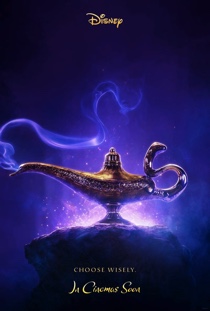 6. Aladdin
6. Aladdin
Domestic Gross: $354 million
International Gross: $1.05 billion
Release Date: May 24, 2019
Director: Guy Ritchie
I haven’t really been a fan of Disney’s live-action remakes, but Aladdin is a rip-roaring action/fantasy/musical that manages to exist on a relatively independent and distinguished tonal field. The basic story beats and the songs are of course transplanted, but at least an effort is put forth to serve a wholly invigorating and enchanting piece of family entertainment that provides something new to fans and newcomers alike. True to its ambition of presenting an epic adventure, this Aladdin runs a whopping forty minutes longer than the 1992 version, yet almost none of it is filler. Princess Jasmine (Naomi Scott) is given as much agency and focus as the titular character (Mena Massoud), the beloved plucky street rat who falls in love with her and decides to use a certain magic lamp with a certain resident genie (Will Smith) to become a prince so he can marry her. Of course, the palace’s evil vizier Jafar (Marwan Kenzari) is also after the lamp. Will Jafar snatch the lamp from Aladdin and become the bloodthirsty tyrant of the land, or will Aladdin defeat him with the help of his buddies, the twitchy monkey Abu and the kindly magic carpet? Of course the answer is clear for anyone with a passing knowledge of the animated film. But some changes, even tiny ones, give us new perspectives on the story. As a Middle-Eastern immigrant myself, I’d be lying if I said the sight of such characters being portrayed by actors who match their ethnicity in such a giant budget Hollywood blockbuster didn’t make me feel a sense of due progress. Yet of course all of that is for naught if the talent can’t deliver. The cast of relative newcomers passes that test with flying colors. Which brings us to Smith’s genie. It’s impossible to top the 100-jokes-a-minute singular power and vigor of Robin Williams’ voice performance, so Smith doesn’t even try. He wisely stays in his lane by letting his trademark swagger and cool magnetism inform the character. After the trailer was released, his blue motion capture CG representation as the genie in his true form understandably garnered some unintentional laughs. The body looks fine, but the face resembles an awkwardly applied Snapchat filter. With music that breathes new life to beloved songs with an emphasis on percussion and horns, and production designer Gemma Jackson’s luscious world building that borrows from various Middle-Eastern cultures as added pedigree, Aladdin is the rare remake that actually gives us a whole new world. —Oktay Ege Kozak / Full Review
 5. Spider-Man: Far From Home
5. Spider-Man: Far From Home
Domestic Gross: $388 million
International Gross: $1.13 billion
Release Date: July 2, 2019
Director: Jon Watts
Coming on the heels of the hefty hunk o’ cinematic event that was Avengers: Endgame, Spider-Man: Far from Home is, as one would expect, much lighter fare. That doesn’t stop this 23rd and final entry in the MCU’s initial Feige Phase barrage from serving as an effective coda for Endgame even as it presents what is, in many ways, a classic Spider-Man adventure. Along with having a Grade A capturing of a C-tier villain (Mysterio), Spider-Man: Far from Home is (relatively) small, sincere and funny, and has more than your usual MCU allotment of post-credit bombshells. Though a comparatively recent addition to the Marvel Cinematic Universe, this is already Tom Holland’s fifth film as Spider-Man in three years. Like so many other casting decisions made in the MCU, he’s proven himself near perfect in the role. No Golden Age lasts forever, and the MCU will eventually stumble—but as long as they can spin box office (and audience) gold from relatively the Mysterios and Vultures of Spidey’s rogues gallery, it won’t be Holland’s Spider-Man that is the first to stumble. —Michael Burgin / Full Review —Michael Burgin
 4. Captain Marvel
4. Captain Marvel
Domestic Gross: $426 million
International Gross: $1.13 billion
Release Date: March 8, 2019
Directors: Anna Boden, Ryan Fleck
It remains, when you think about it, absolutely insane that the Marvel Cinematic Universe has featured two new movies, one of which introduces an entirely new character, in between two halves of a nearly six-hour epic where half the cast dies in Part One. Talk about your flex moves! One thing Captain Marvel has going for it that Ant Man and the Wasp didn’t is that it gives us a lead character we can care about and (even more importantly) an actor who rises to the occasion. In many of these Marvel origin stories—and by my count, this is the eighth one since the original Iron Man—the movie goes through great pains to explain to us why we should care about this new character, why, with everything else we have to keep track of, we should readily agree to adding one more to the mix. Captain Marvel, like many MCU movies, sometimes labors under the weight of having to tell its own story while still connecting to the larger, ongoing saga, but it has no issues with justifying its main character: We see in her eyes, from the first second, what’s different about her. The movie has us on her side before she ever says a word. The key is Brie Larson, an instantly, almost subconsciously empathetic actress who finds a new, fascinating gear here as Vers who, when we first meet her, is a Kree warrior fighting in outer space with an elite force led by her trainer, Yon-Rogg (Jude Law). Vers has no memory of her past, but it returns to her when, in the midst of a battle, she’s dumped onto a distant planet that turns out not only to be Earth, but also her home planet and in the year 1995. She ends up, rather conveniently, running into future S.H.I.E.L.D. head Nick Fury (a digitally de-aged, and convincingly so, Samuel L. Jackson) and a series of Air Force pilots who provide clues to her past through a supersecret initiative called “Pegasus.” The film is otherwise entertaining and exhausting in the equal measures we have come to expect from modern Marvel movies—if you’ve seen one bad guy bent on galaxy domination, you’ve seen them all. But this movie isn’t about the supporting characters, or the setting, or even how well its big action set pieces play out. It’s all about whether or not they can sell this Captain Marvel as someone who even the mighty Avengers can call to someday help them save the world. —Will Leitch / Full Review
 3. Toy Story 4
3. Toy Story 4
Domestic Gross: $432 million
International Gross: $1.05 billion
Release Date: June 21, 2019
Director: Josh Cooley
We were all concerned about Toy Story 4. How could we not be? This is perhaps the most beloved animated franchise of the last 50 years, and, in the eyes of many, each movie has been a little better than the last one. That final one, Toy Story 3, ended in such a perfect, emotionally devastating fashion that trying to follow it up felt like the ultimate fool’s errand. And in the nine years since that installment, Pixar, as a company, has changed, becoming more corporate, more sequel-focused, more …Disney. What a relief it is, then, that Toy Story 4 is such an immense joy. It might not reach the heights of Toy Story 3—which manages to be a prison escape movie that also happens to be a profound dissertation on grief and death and features a surrealist tortilla—but it is a more than worthy member of the Toy Story family. Like its protagonist, it’s less concerned with trying to do something revolutionary just because it’s done it in the past and instead worries about what comes next …what the next logical progression is. It finds the next step, for Woody (voiced as ever by Tom Hanks in what honestly has always been one of his best roles), and the franchise, while still being as hellzapoppin’ and wildly entertaining as you have come to expect from this franchise. The overarching theme in Toy Story 4 isn’t as much death as it is loss—loss of purpose, loss of meaning, loss of value. What do you do with yourself when the best thing you’ll ever be a part of is already over? How do you find drive in life when your lifelong goal has been accomplished? How do you handle getting old and not being needed anymore? If these seem like heady concepts for a Toy Story movie …you’ve never seen a Toy Story movie. —Will Leitch/ Full Review
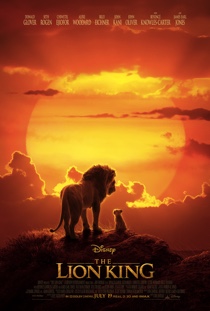 2. The Lion King
2. The Lion King
Domestic Gross: $530 million
International Gross: $1.60 billion
Release Date: July 19, 2019
Director: Jon Favreau
The Lion King feels less like a more “realistic” version of the classic animated original than a bloodless X-ray of it. The new Disney trend of making “live-action” versions of their animated catalog—“live-action,” of course, being the exact wrong term for what this is—can have a purpose besides the obvious profitability of reviving an existing brand name if its goal is to conjure the spirit of the original rather than artificially reinflate its corpse; David Lowery’s Pete’s Dragon wasn’t perfect, but it felt like a fond cover rather than, well, taxidermy. That’s what the new Lion King feels like: It feels like taxidermy. It feels like computers attempting to impersonate real life and doing so with such rigid, determined accuracy that the result feels both emotionless and even a little ghoulish. What exactly are these creatures? The movie is dutifully mounted, and Favreau brings the same dogged professionalism he brought to The Jungle Book, a film with many of the same problems as this film. It does its job all too well. The problem is that The Lion King is The Lion King, you know? This is a universally powerful story, with terrific songs and countless funny and fascinating supporting characters. It’s a classic of performance and sensation. This version, seemingly by design—like that was the damned plan all along—drains every bit of life from it … in order to make it more “realistic.” I would love to watch a documentary about these beautiful animals in the flesh. I would love to watch the original film with its joy and grandeur and scope and sense of fun. This? This bizarre, literal-minded thing? I don’t know what this is. —Will Leitch
 1. Avengers: Endgame
1. Avengers: Endgame
Domestic Gross: $858 million
International Gross: $2.80 billion
Release Date: April 26, 2019
Directors: Joe Russo, Anthony Russo
Where does one begin? When it comes to Avengers: Endgame, that question is not so much an expression of wanton enthusiasm as a practical challenge in evaluating the destination toward which Kevin Feige and company have been steering story and viewer alike for the past 11 years and 21 films. Though there have been plenty of three-hour-plus movies and even a few 20+ entry movie franchises, there’s really nothing to compare with what Disney and Marvel Studios have pulled off, either in terms of size, quality and consistency of cast (a moment of silence for Edward Norton and Terrence Howard), or in how narrow the chronological window, all things considered, those movies were produced. Though we’ve praised it often, casting remains the cornerstone of the MCU. Whether by pitch-perfect distillations of decades-old comic book characters (Captain American, Thor, Spider-Man) or charisma-fueled reinventions of same (Iron Man, Ant-Man, Star-Lord), the MCU’s batting average in terms of casting is not only practically obscene, it’s a crucial ingredient in ensuring the thematic and emotional payoff (and box office payday) of Endgame. Moviegoers have been living with these actors, as these characters, for over a decade. For many, this version of these characters is the only one they know. This is why the sudden ashification of so many heroes at the end of Infinity War hit even the most cynical comic book veterans right in the feels and left less hardened viewers confused and distraught. It’s also why, as Avengers: Endgame opens (after another swift kick to the stomach just in case we’ve forgotten the toll of that snap), the audience cares about not just what the surviving heroes are going to do, but how they are doing in general. It gives the film an emotional resonance that’s unusual not only in pulpier genre offerings but in films in general. This connection makes the quiet moments as valuable to the viewer as the spectacle, and for all the fireworks in the third act, Avengers: Endgame is very much a film of quiet moments and small yet potent emotional payoffs. Comic book fans know the thrill of following all your favorite characters through a multi-issue storyline that culminates in a “universe at stake” ending. Now, thanks to 21 movies in 11 years and one massive, satisfying three-hour finale, moviegoers do, too. —Michael Burgin / Full Review
You can also check out The Highest-Grossing Movies of All Time (Worldwide).







































